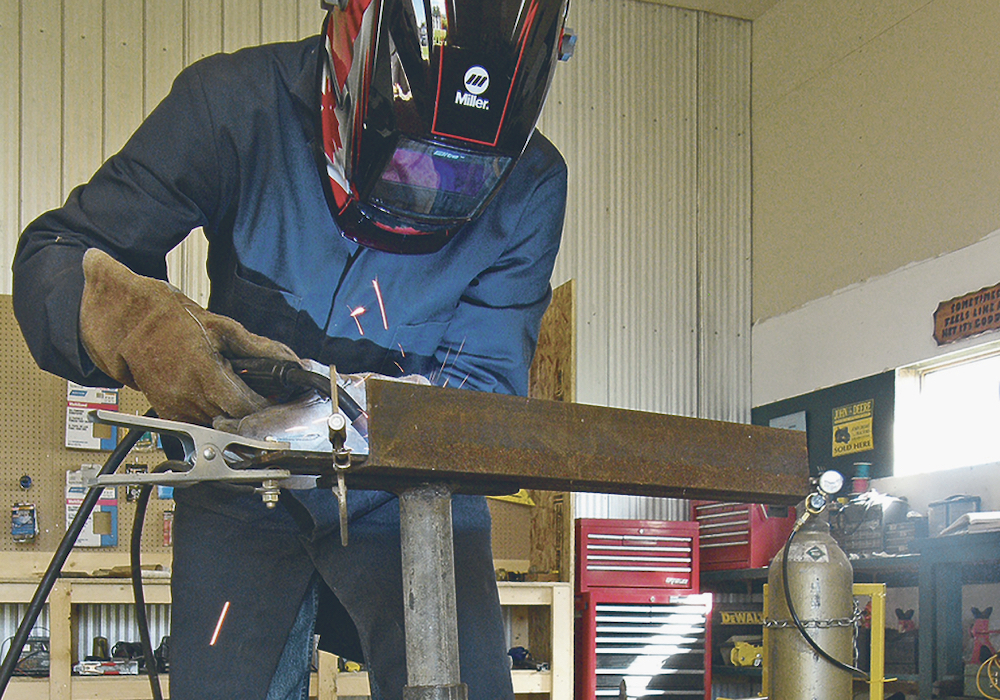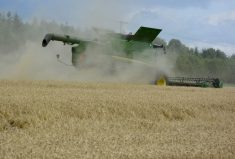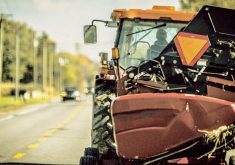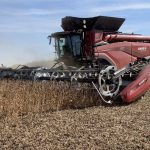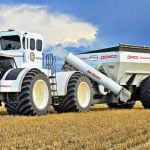Glacier FarmMedia – Anyone who has spent days working in a commercial mechanical shop will almost certainly have used the first aid kit to bandage a cut — or worse.
And more than a few have made an occasional trip to the emergency ward.
A farm workshop is even more likely to be the scene of an injury. According to the Canadian Agricultural Safety Association, farmers are five times more likely to be injured in the workplace than those in other industries.
Read Also

How stories promote farm safety
Speakers at CASA online conference explain how personal stories can be more valuable than statistics in communicating importance of farm safety
How can producers design and equip an efficient workshop to minimize the risk of injuries and deal with them if they happen? First, think about organization.
“When building a shop, try and plan out how you’re going to keep things clean,” says Dean Anderson, board director at CASA and former strategic advisor of Workplace Safety and Prevention Services in Ontario.
“Storage up off the ground is better than on the ground. Where are you going to store old dirty rags? Hopefully, outside in a bin. Don’t store fuels in the shop. If you have a lot of paint thinners and those sorts of things, buy a proper cabinet.”
Many shops include a mezzanine area above an office, which is useful for storing parts and supplies. Ensure it has a guard rail along the edge and hand rails on the stairs to help prevent falls.
If equipment will be washed inside, a floor drain is an advantage. Water pooling on concrete that has seen its share of oil spills makes for a slippery surface.
Having a ventilation system to route engine exhaust outside without having to open a door will eliminate the risk of carbon monoxide buildup. Using a system like this can also pull welding fumes away and make that job safer too.
“Ventilation is really important for personal safety,” says Anderson. “It does not take very long when working on even a small two-cycle engine or ATV inside the shop with the doors closed for carbon monoxide to build up. If you do a lot of welding, you need ventilation.
“And put in a carbon monoxide sensor.”

Proper lighting levels are also key to a safe work environment. A CASA-QFA-Ag Canada research paper suggests having an average overall lighting level of 250 lux, which can be a little difficult to calculate.
But other sources also point out that as we age, our eyes require higher light levels. For producers 65 or older, that general limit could need to be as high as 300 lux, and more for areas where specialized tasks are performed.
Anderson recommends investing in good quality light fixtures.
“With LED lighting, we get very good lumens for very little cost. Flickering fluorescent lights can be tiring.”
First aid kits should be stored in an easily accessible area, such as mounted on the wall near an exit. Not all farm shops have working plumbing, but keeping a container of solution for an eye wash station should be a consideration. Eye contamination is a common workshop injury.
Ensure electrical supply is appropriate for the demand by locating outlets close to where they will be needed. And if working in an older building, check the electrical service for potential problems.
“The number one cause of barn fires is electrical,” says Anderson. “Electrical wiring, fuses, they can deteriorate. Cheap infrared (thermometers) you can buy at Canadian Tire work quite well. You can point it at your electrical breaker box and it’ll point out a hot spot.”
Mounting fire extinguishers near an exit is the best location. Extinguishers should be the ABC type and large enough to handle a reasonably serious but localized fire. They may be the only practical fire protection some farms have.
Noise is an often overlooked aspect in shops. Things like large air compressors have high noise levels that can damage hearing over time.
“When you’re designing a shop, design it so the noise levels are controlled,” Anderson said. “If you can buy [equipment] that is quieter … that’s better,” says Anderson. “Hearing loss is permanent.”
Location of noisy components can also help reduce sound levels
“If, for example, you can put the air compressor outside the shop, the noise is nowhere near as bad. Or mount it up on a storage mezzanine area. Put fan motors outside if you can. That dramatically reduces the sound.”
Finally, although children should not be playing in work areas, child proofing a workshop is a consideration. On most farms, young children will often end up there for practical reasons.
“I’m not going to defend that, but set up a play area,” says Anderson. “Put a fence around it, especially when you’re doing something dangerous like moving stuff around or stuff that takes 100 per cent concentration. A lot of dairy farmers do that.
“If you’re wiring a new shop, why not put it so the power outlets are on a switch so you can turn them all off, so a kid can’t come in and say ‘I’m going to run dad’s drill press’, turns it on and the key chuck goes flying off?”


